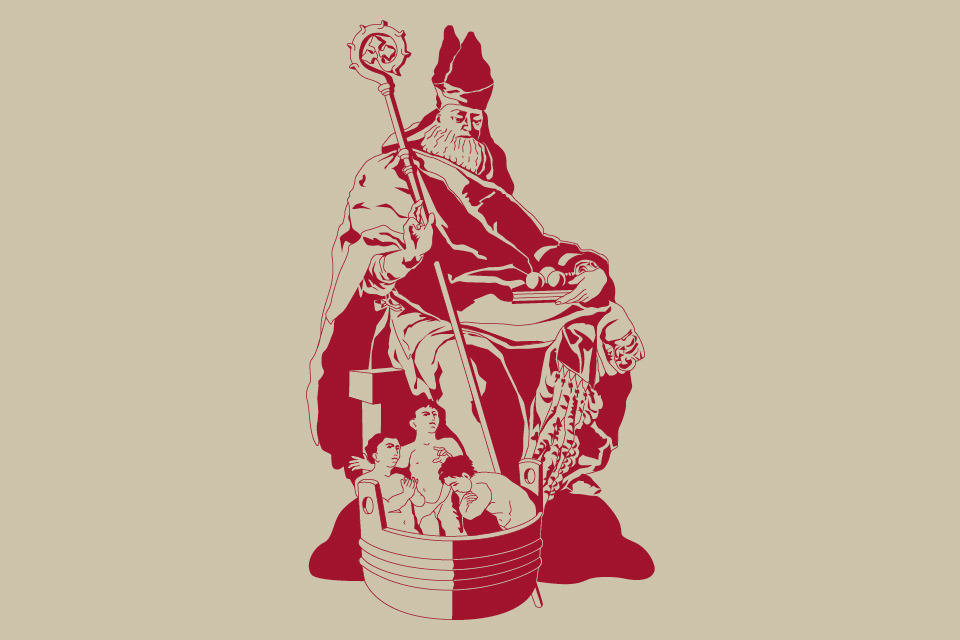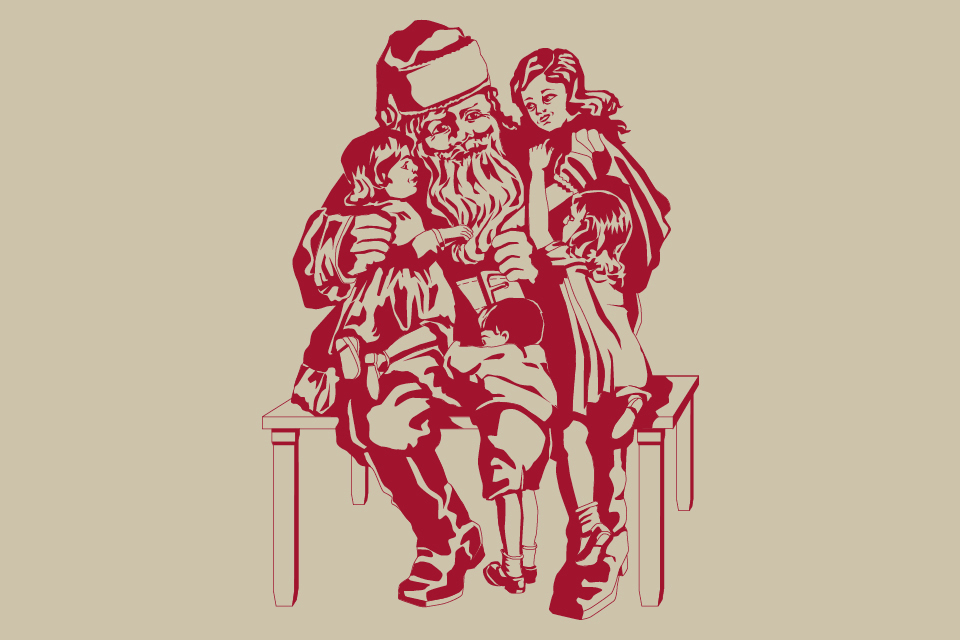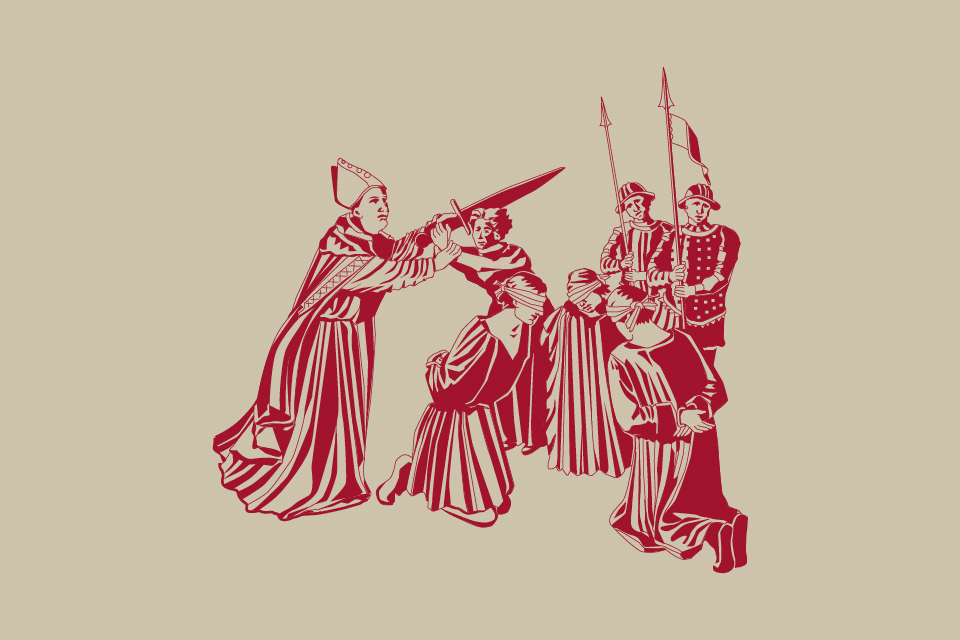NOTHING FOUND!
NICHOLAS
NICHOLAS AND THREE SAVED BOYS IN A BARREL
Nicholas, together with St Martin, is one of the most significant saints in European tradition to be known beyond Christianity. He is famous most of all for his friendliness and helpfulness. Until the Reformation he was the generous friend of the children. Then Martin Luther introduced the Christ Child as the bringer of gifts and thus, in Germany, Nicholas became its forerunner. St Nicholas’ Day is observed on December 6. “Nikos” is “victory” in Greek and “laos” is “people” – so Nicholas means “people’s victory”. He bears closeness to the people in his name. He died in 350 as Bishop of Myra (modern-day Demre, Turkey). In medieval times he was also understood and honoured as a kind of spiritual mayor. He can be identified by his bishop’s garment, mitre and crosier, the symbolic pastoral staff.
Nicholas – giving friend of the children
Today, Nicholas is mostly known as a figure of tradition. He is often shown wearing a white beard, red coat and carrying the Book of Wisdom and a sack full of gifts. In America, Coca-Cola has him drive a truck as “Coca-Cola-Santa”, in Nordic countries he steers his reindeer. In Russia he has appeared as “Father Frost” since the October Revolution. In Switzerland he is accompanied by his assistant Schmutzli, who is also known as Knecht Ruprecht in Germany. There and in many other parts of the world, Nicholas replaces the Christ child or Father Christmas visiting the children at home and openly presenting gifts on Christmas Eve or December 25. The secret gift-giving, as in the legend of the rescue of the three women, is taken up nowadays in the custom of “Secret Santa”.
Nicholas as a reading student
Nicholas has a close relationship with students. As a child he was curious and attentive himself. At his time as bishop he revived three students who were beaten to death while on the road. Owing to Nicholas, from December 6 to December 28, Innocents’ Day, a boy bishop or student bishop is traditionally selected from a group of students. In their juvenile wisdom they are supposed to appeal to adults’ conscience.
Nicholas helps sailors in the storm
Nicholas’ story is preserved in the most popular book of the Middle Ages, the “Legenda Aurea”, which depicts the lives of holy men and women. It also reports on how Nicholas helped sailors who were at great peril. He did not calm the storm with one word as Jesus did. He secretly put a helping hand to “sails and ropes” – they all survived the storm and reached the shore safely. The seamen comprehended that their own action was crucial. No miracle can be experienced without one’s own active involvement and trust. Thus, for the sailors Nicholas evolved as a source of hope in times of need. He became their model, friend and assistant. Consequently, numerous churches were erected near the sea to venerate Nicholas as patron saint. Having safely arrived on land, here was the place for the sailors to give thanks.
Nicholas spared three innocent
Using the power of his office, Nicholas spared three innocent knights from death. He positioned himself in front of the executioner’s sword and accused the corrupt official: “You enemy of God, you law-breaker!” Nicholas had authority over the secular powers. He used it selflessly and stood up against lawlessness and injustice. He fought for justice and became a peacemaker.
Nicholas gives the dowry to the three young women
It is reported that a respected neighbour fell into poverty so badly that he thought the only way to secure the survival of his family was to send his three daughters onto the street. Nicholas heard about this. He was wealthy enough and secretly slipped the neighbour the necessary money without him realising it at first. Doing this, Nicholas saved father and daughters from misery. The father used the gift to arrange a good marriage for his daughters, thereby securing their future. Everyone was served well. Nicholas did not hold wealth in high esteem. He helped by giving and sharing – not as a saint or bishop, but as an empathic neighbour. He gave for the well-being of the people next to him. This is shown by three golden balls or sometimes by three golden apples, which – as the apples of Venus – hint at the three saved young women. Based on this story, Nicholas also represents social community and charity.
Nicholas giving bread
– after “Nicholas feeding the people of Myra”, 1909, altar relief, St. Nicholas Church, Sülz-Klettenberg









